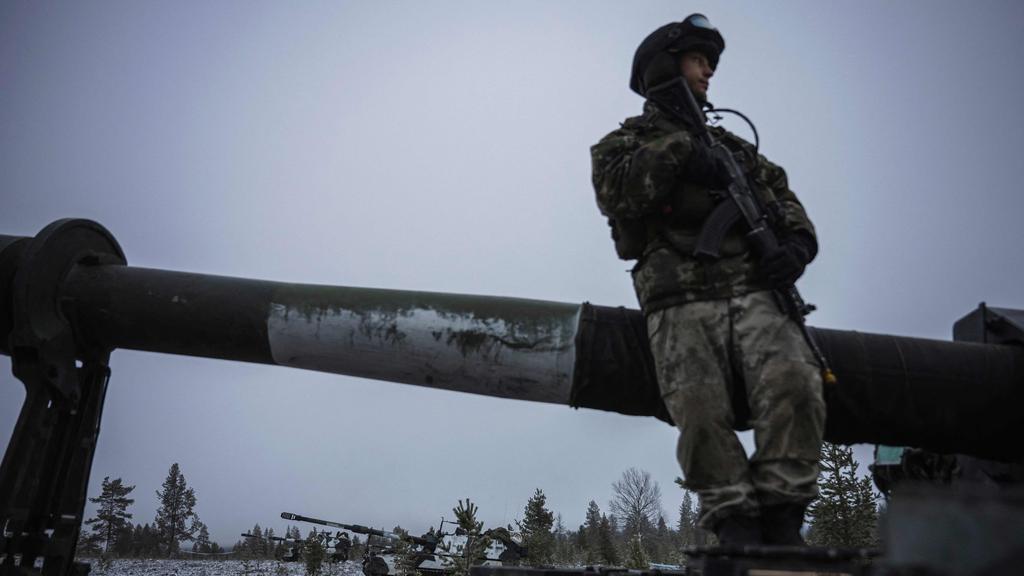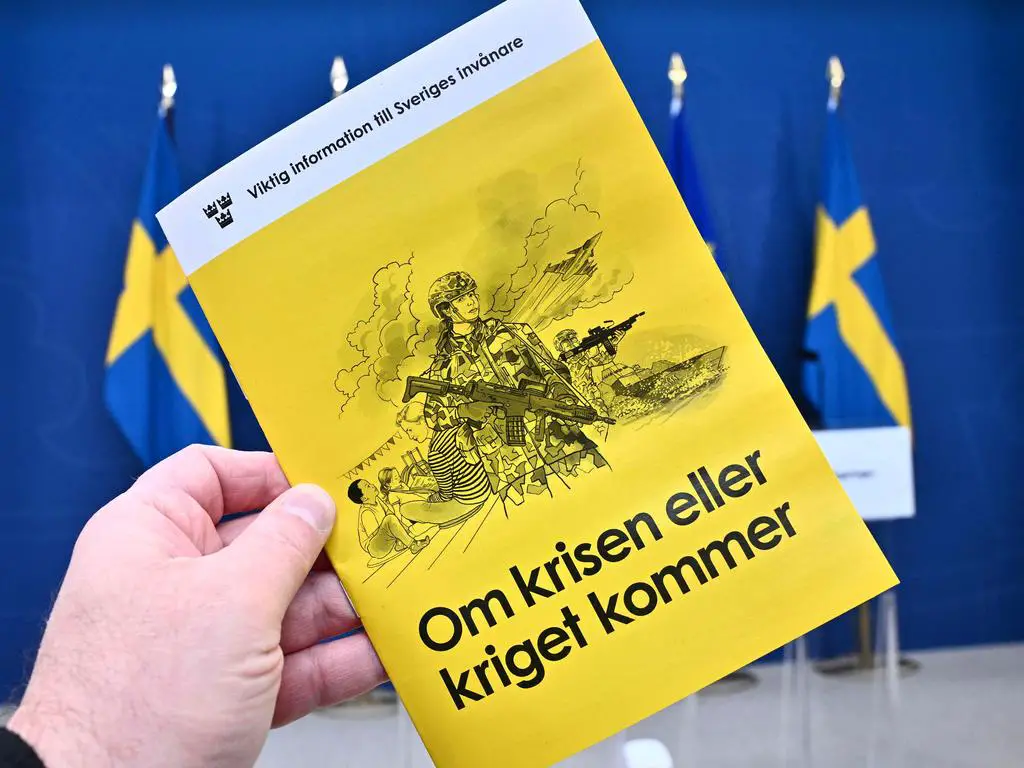Once a bastion of peace and military non-alignment, the Nordic region is undergoing a dramatic transformation in its security policies.
With the ongoing conflict in Ukraine serving as a grim backdrop, Sweden and Finland—recent NATO entrants—are taking unprecedented steps to prepare their citizens and infrastructure for the possibility of war.
The moves come amid growing concerns over Russia’s geopolitical ambitions and threat to neighboring countries.
A Region on Alert
For decades, Sweden and Finland pursued policies of military neutrality, focusing on diplomacy and peacekeeping missions rather than large-scale defense preparations. This stance was upended following Russia’s 2014 annexation of Crimea and, more decisively, the full-scale invasion of Ukraine in 2022. The resulting security landscape has driven both nations to rethink their defense strategies and align more closely with NATO.
In recent weeks, these shifts have become particularly visible. Sweden’s Civil Contingencies Agency (MSB) began distributing 5.2 million pamphlets, titled If Crisis or War Comes, to households nationwide. Meanwhile, Finland launched a comprehensive preparedness website offering guidelines on how residents can face a variety of crises, including armed conflict. These efforts underscore the severity of the security situation and the Nordic countries’ determination to prepare their citizens mentally and logistically for the unthinkable.

Sweden’s Defense Evolution
Sweden’s approach to defense has undergone a complete overhaul since the Cold War. Once focused on international peacekeeping, the country slashed defense spending and disbanded many military facilities in the 1990s. However, Russia’s aggressive actions in Eastern Europe have prompted a return to a more robust defense posture.
Key milestones in Sweden’s defense recalibration include:
- Reinstating Conscription: In 2017, Sweden reintroduced mandatory military service, ensuring a steady pool of trained personnel.
- Reopening Strategic Bases: The Baltic Sea island of Gotland, a critical point for regional security, saw its garrison reopened and strengthened.
- Investing in Infrastructure: Efforts to modernize bomb shelters, enhance water supplies, and fortify transport networks reflect Sweden’s commitment to resilience.
- Combatting Disinformation: The establishment of a Psychological Defence Agency highlights the importance of countering misinformation, which has become a key element of modern hybrid warfare.
The If Crisis or War Comes pamphlet, last updated in 2018, has been revised to emphasize wartime preparedness. The 32-page document advises Swedes to stockpile essentials, maintain access to cash, and even grow their food. It also issues a firm declaration: “If Sweden is attacked, we will never surrender.”
Focus on Readiness
Finland’s proximity to Russia—sharing a 1340-kilometer border—has always shaped its defense strategies. Unlike Sweden, Finland maintained a higher degree of preparedness even during the post-Cold War era.
Since the invasion of Ukraine, Finland has taken additional steps to bolster its defenses:
- Border Security: Construction has begun on a 200-kilometer fence along the Finnish-Russian border, aimed at preventing potential incursions or hybrid attacks.
- Modernized Infrastructure: The government has invested in fortifying critical infrastructure, including undersea data cables and transport networks.
- Public Awareness Campaigns: The new preparedness website is part of a broader effort to educate citizens about potential crises, ranging from cyberattacks to military threats.
Finland’s swift decision to join NATO following the Ukraine invasion demonstrates the urgency with which Helsinki views its security situation. The country’s historical experiences with Russian aggression, including the Winter War of 1939-1940, have instilled a deep understanding of the need for vigilance.

Regional Implications for NATO
The integration of Sweden and Finland into NATO significantly alters the strategic calculus in the Baltic region. Both countries bring advanced military capabilities, well-trained personnel, and critical geographic positions to the alliance.
Strategic Benefits
- Baltic Sea Control: With Sweden’s naval expansion and Finland’s border security measures, NATO’s ability to secure the Baltic Sea has been greatly enhanced. This is crucial for ensuring supply routes and deterring potential aggression.
- Enhanced Intelligence: Both nations have robust intelligence capabilities, particularly in monitoring Russian activities. Their contributions strengthen NATO’s situational awareness in the region.
- United Front: The addition of Sweden and Finland sends a strong signal of unity within NATO, reinforcing the alliance’s commitment to collective defense under Article 5.
Challenges Ahead
While their NATO membership brings clear advantages, Sweden and Finland also face challenges:
- Public Anxiety: The shift from neutrality to active NATO membership has sparked debates within both countries. Leaders must work to reassure citizens while addressing fears of escalation.
- Economic Costs: Increased defense spending and infrastructure investments place significant financial burdens on both nations. Balancing these costs with other domestic priorities will be crucial.
- Hybrid Threats: Recent incidents, such as the severing of an undersea cable between Finland and Germany, highlight the risks of hybrid warfare. Safeguarding critical infrastructure against such attacks will require constant vigilance.

A Shared Responsibility
One of the most striking aspects of Sweden and Finland’s recent initiatives is the emphasis on civilian readiness. Recognizing that modern warfare often targets societies as a whole, both nations are empowering their citizens to take proactive measures.
Sweden’s War Pamphlet
The distribution of If Crisis or War Comes reflects Sweden’s commitment to engaging the public in national defense. The booklet covers:
- Essential Supplies: Recommendations for stockpiling food, water, and medicine.
- Emergency Plans: Guidelines for identifying safe shelters and maintaining communication during crises.
- Disinformation Awareness: Tips for identifying and countering false narratives, which can undermine morale and sow division.

Finland’s Preparedness Website
Finland’s online resource provides detailed advice on:
- Crisis Scenarios: Information on handling natural disasters, cyberattacks, and military conflicts.
- Community Support: Encouraging citizens to collaborate and assist vulnerable individuals during emergencies.
- Mental Resilience: Stressing the importance of staying calm and informed in high-pressure situations.
By prioritizing civil preparedness, both countries aim to create societies that are resilient in the face of external threats.

Broader Lessons for NATO and Beyond
The actions taken by Sweden and Finland serve as a blueprint for other NATO members, particularly those near Russia. Key takeaways include:
- Invest in Resilience: Strengthening both military and civilian infrastructure is essential for deterring aggression and minimizing disruption during crises.
- Engage the Public: Clear communication and practical guidance empower citizens to contribute to national security.
- Adapt to Hybrid Threats: As modern conflicts increasingly involve cyberattacks, disinformation, and economic pressures, nations must adopt comprehensive defense strategies.

The Nordic nations’ rapid pivot from neutrality to NATO membership underscores the gravity of the current security environment. For Sweden and Finland, the stakes are high: their geographic location and historical experiences make them key players in Europe’s defense against potential Russian aggression.
By taking proactive measures to prepare their citizens and bolster their military capabilities, Sweden and Finland are not only safeguarding their sovereignty but also strengthening the broader NATO alliance. Their actions remind the world that resilience—in all its forms—is the cornerstone of security in an era of uncertainty.


